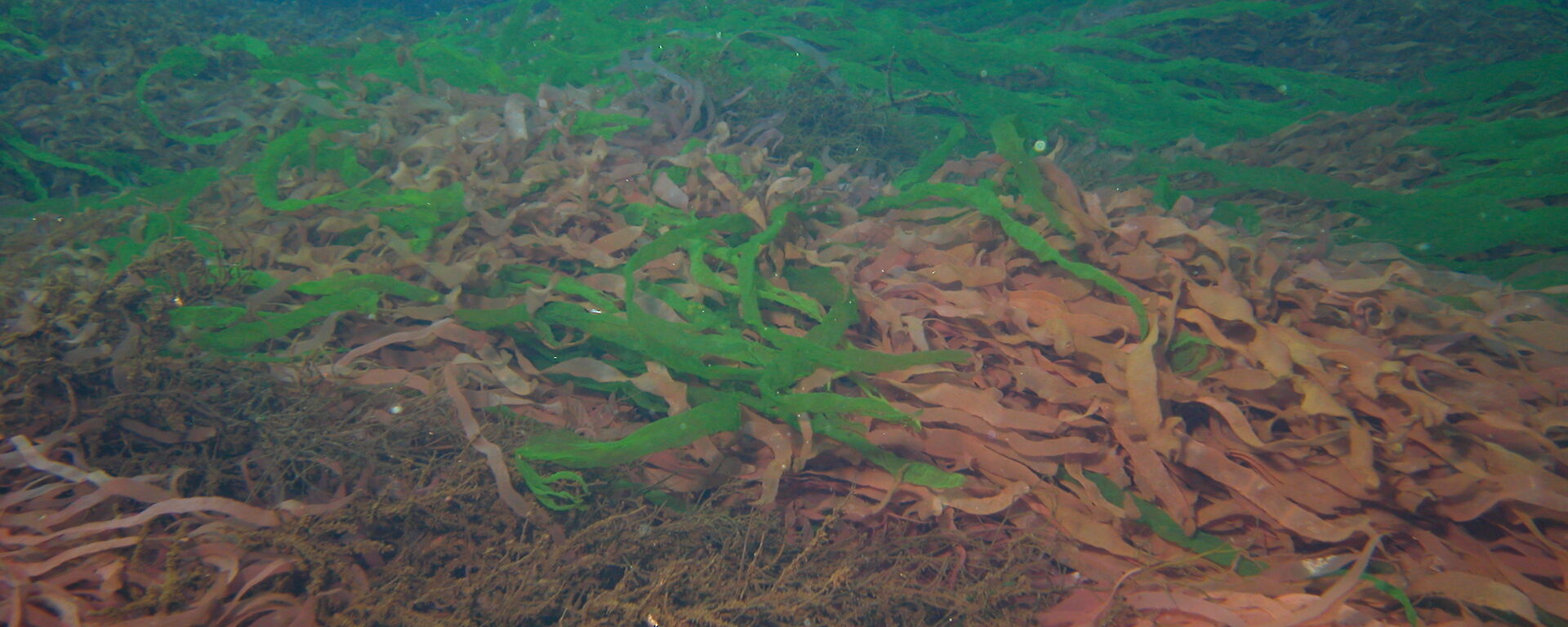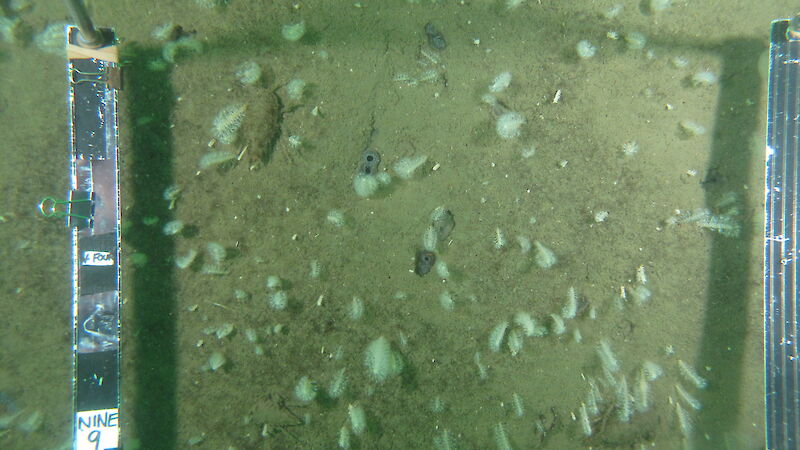Antarctic marine animals and plants have adapted to their unique environment. The seawater is cold, but the range varies little between seasons, and the amount of sediment entering the sea from the land is small and restricted to the time of the summer melt. As a result of their adaptation, the coastal marine plants and animals in Antarctica may vary from temperate species in their susceptibility to contaminants.
In the mid to late 1990s an intensive and multidisciplinary study of the potential impacts of nearshore marine contamination was initiated at Casey, and a diving program was established to facilitate the in-water collection of samples, establishment of experiments, and deployment of equipment.
Benthic ecology
In our research at Casey, marine benthic (sea floor) communities are compared at sites close to the old refuse tips and at sites nearby that are outside the influence of contamination (i.e. clean sites). Our aim is to determine whether contamination is responsible for changes in the diversity and distribution of species in two different communities:
- those animals that live within the marine sediments
- those plants and animals that live in association with the subtidal rocky reefs.
A major component of this research involves the collection and identification of the various marine plants and animals that are encountered around Casey.
Marine sediment communities
Soft sediments (sand, mud and silt) are found within most of the bays along the coast of Antarctica. The origin of the sediment is both terrestrial (from the land) and biological (remnants and by-products of marine plants and animals). A variety of small animals live within the sediment (infauna) and on its surface (epifauna), feeding on each other and on the organic matter that occurs in the sediment. Communities such as these are commonly used throughout the world as indicators of contamination.
At Casey, we have identified the main species within the sediment communities in a number of bays, and have established experiments that will test for differences in the number and type of animals that colonise clean and contaminated sediments. Such experiments are being used to determine the current extent of impacts caused by the presence of waste tips, and will form the basis for monitoring additional impacts that may be created during the removal and remediation of tip waste.
Macroalgal communities
In contrast to the soft sediment areas within the bays around Casey, the rocky subtidal reefs are often covered by a lush growth of seaweed (macroalgae), consisting of some species that are present year round (perennial) and other species that grow quickly each summer and die off before winter begins (annuals). The macroalgae form the basis of these communities by providing shelter and food for the variety of macrofauna that live amongst them — animals such as sea urchins, starfish, sponges and fish.
Our research is attempting to understand the factors that determine where macroalgal communities occur and why they don’t occur in all bays near Casey. Measurements of the physical environments of the bays (e.g. water quality, ice cover, substrate types, water currents) and the level of grazing by different herbivores at different sites will help to determine whether contaminant run-off from waste sites and station activities is a major factor influencing the distribution and health of macroalgal communities. Our aim is to identify whether measurements of macroalgal community complexity and health can be used as an effective indicator of contamination derived from human activities. The big challenge is to differentiate possible effects of human activity from the natural variability inherent in these diverse communities.
Microalgal mats
Not all marine plants are large seaweeds and, in fact, one of the most common types of benthic algae found in the Casey area (and elsewhere) are small, single-celled microalgae that form extensive mats over the sea bed during the productive summer growth period. These mats of microalgae consist of millions of individual algal plants known as diatoms, and are considered a major contributor to the primary productivity of the marine environment.
Research on the diatoms of the Casey region is identifying the diversity of species present in the macroalgal mats and defining their lifecycles. The aim is to understand how the diatom communities function and their importance to the coastal marine ecology. Once we understand their ecology, diatoms may be used as a useful indicator of human related pollution.



